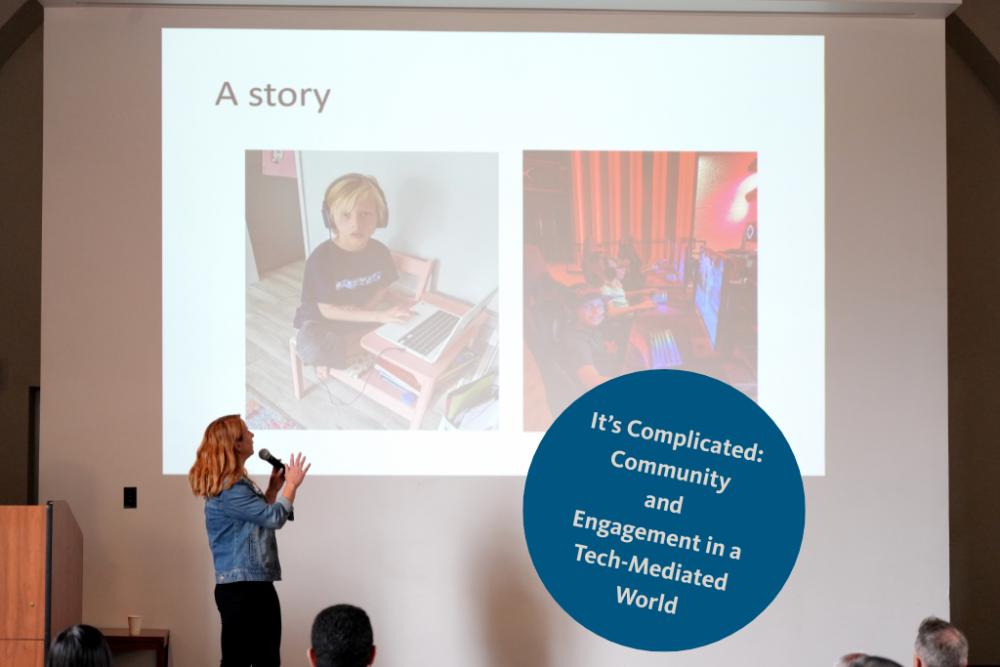On Thursday, May 29, 2025, the BruinTech Spring Conference was held at Royce Hall, bringing together UCLA IT professionals and staff for a full day of presentations, workshops, and discussions.
The agenda included keynote talks, breakout sessions, and opportunities for attendees to connect with colleagues from across campus. Sessions throughout the day focused on practical applications of technology to support university operations and services.
This year’s theme, “Becoming a More Effective Institution,” encouraged participants to consider how their work contributes to UCLA’s broader mission. Topics included system improvements, process optimization, and the development of inclusive, user-centered digital services.
A keynote presentation by Kate Miffitt, Chief Digital Experience & Engagement Officer, UCOP, entitled, “It’s Complicated: Community and Engagement in a Tech-Mediated World,” addressed how we center human connectedness in a digital world.
Following is a recap:
In an era where emerging technologies—particularly artificial intelligence—are accelerating at a rapid pace, higher education professionals are grappling with potential disruption, uncertainty, and questions about the human purpose of technology. Miffitt introduces two educational theories as ways to think about AI, and how to center connection and community in our tech-mediated environments.
Why do so many technologies fall short?
From the rise and fall of Second Life to the overhyped promises of MOOCs and the allure of generative AI, higher ed has seen many waves of tech-driven “transformation.” In 2012, Sebastian Thrun predicted that only ten universities would survive MOOCs, with Udacity among them. That didn’t happen.
Why? Because most technologies that fail to deliver on their inflated expectations have one thing in common:
They overlook the essential role of human connection. Emerging technologies are often positioned as replacements for people. But learning doesn’t happen in isolation—it is a social activity that happens in community.
Why connection still matters more than innovation
To explain the gap between tech promises and learning outcomes, Miffitt introduced Transactional Distance Theory, developed by Michael G. Moore in the 1970s. The theory reframes “distance” not just as physical separation, but as a gap in interaction, dialogue, and support. What happens when dialogue decreases and gaps in interaction increase? Confusion, isolation, and disengagement. Emerging technologies have often been positioned to replace the resource-intensive person-to-person interactions, but those interactions are needed to facilitate learning.

Bridging the gap
So how do we reduce transactional distance?
It starts with small, human touches:
- A warm welcome message in a digital classroom.
- A thoughtfully designed interface that anticipates user needs.
- A facilitator who checks in, not just checks boxes.
These moments of connection matter. They remind us that behind every screen is a person.
From substitution to transformation
To further explore technology’s role in education, Miffitt introduced the SAMR model (Puentedura, 2014), which outlines four levels of tech integration:
- Substitution – Replacing traditional tools with digital ones (e.g., typing instead of handwriting).
- Augmentation – Improving tasks with functional enhancements.
- Modification – Redesigning parts of a learning task in new ways.
- Redefinition – Enabling entirely new learning experiences previously impossible without tech.
While many applications of technologies remain stuck in Substitution or Augmentation, Miffitt encouraged attendees to look upward: How we use AI to do something transformative?

Questions that matter
Participants were invited to reflect on questions designed to surface shared wisdom:
- Where has technology increased—or decreased—connection in learning or work?
- What small design choices reduce distance and foster engagement?
- How can teams apply AI in ways that support—not replace—human relationships?
- Most importantly: What can we do that is transformative, together?
These questions offered a bridge between the theoretical and the practical, connecting educational frameworks to the daily decisions made by technologists and educators alike.
Let’s do something transformative — together
Technology isn’t going away. Rather than resist AI through avoidance, Miffitt proposed a form of engagement that centers connection, dialogue, and community. In that space—between machine and human, automation and agency—higher education can lead with intention.
Let’s keep asking: How do we center people in a tech-mediated world? Because it’s complicated. But it’s also full of possibility.
Contact

Chief Digital Experience and Engagement Officer
UC Office of the President







